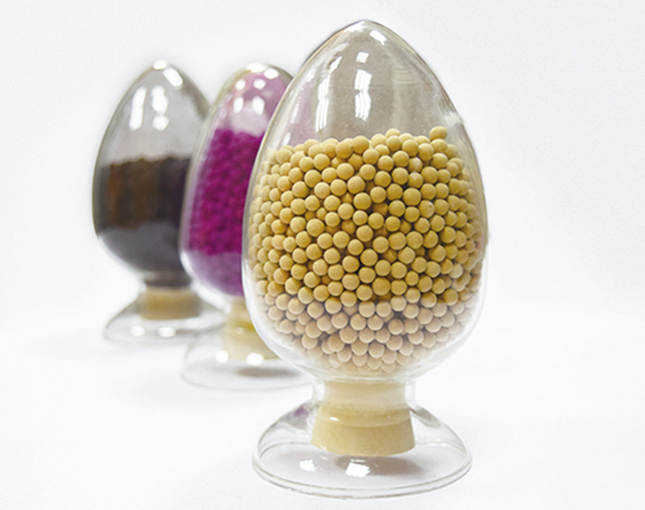Ozonation Catalysts for Waste Water Treatment
Ozonation catalyst is a highly efficient ozone oxidation catalyst using rare earth modified activated alumina as a carrier and transition metal composite oxide as an active component for purification of organic wastewater. It has the technical characteristics of strong degradation ability, low ozone consumption, no secondary pollution, and long service life. Suitable for wastewater treatment in petrochemical, coal chemical, fine chemical, printing and dyeing, papermaking, leather, medicine, animal husbandry and other industries.
Ozone oxidation catalytic technology is an efficient advanced wastewater treatment technology. Compared with ozone as a separate oxidant, the [·OH] formed by ozone under the action of catalysts has a higher reaction rate and stronger oxidizing properties with organic substances, and can oxidize almost all organic matter. The catalyst can use the strong oxidizing properties of ozone to directly oxidize organic matter in water to CO2 and H2O, or oxidize and decompose large organic matter into small molecules, making it easier to decompose into small molecules and more easily degraded.
Technical characteristics:
1. The composite porous, high-strength silicon-aluminum catalyst support, and doped catalyst components that are not easy to lose, improve the stable performance of the catalyst. The carrier is prepared by a special preparation process, with high mechanical strength and long service life.
2. Carefully screened catalytic fillers and active components, using transition metals, rare metals, and rare earth metals as effective catalytic components to ensure the continued high efficiency of ozone oxidation.
3, a variety of catalytic components, to enhance the adaptability of the catalyst to different wastewater, while improving the catalytic activity.
4. The strength of the catalytic filler is ≥100N / piece, and the specific surface area is ≥280m2 / g. There is no loss of the catalytic filler, and there is no need to add it regularly.
5. It can catalyze the self-decomposition of ozone in water, increase the concentration of · OH produced in water, thereby improving the effect of ozone oxidation, and the oxidation efficiency is 2 to 4 times higher than that of pure ozone oxidation.
6, can reduce the activation energy of the reaction or change the reaction process, so as to achieve the purpose of deep oxidation and maximum removal of organic pollutants.


